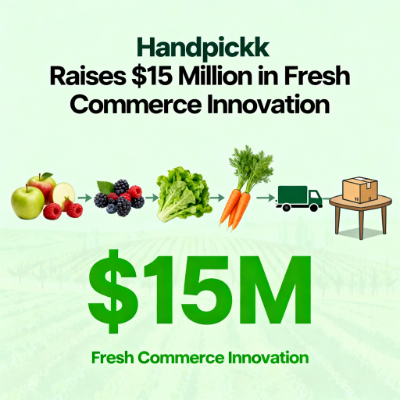Klarna's Evolving Strategy: From BNPL to Digital Banking Amidst IPO Ambitions

- Ritu Tiwari Mishra
- 01 Jul, 2025
Klarna, the Swedish fintech giant, has long been synonymous with the 'buy now, pay later' (BNPL) phenomenon, revolutionizing online retail by offering consumers flexible payment options. However, as the financial landscape shifts and regulatory scrutiny intensifies, Klarna is embarking on a significant strategic pivot: an accelerated transition towards becoming a full-fledged digital bank. This move comes at a critical juncture, as the company eyes a second attempt at an Initial Public Offering (IPO) in the United States, navigating a market increasingly wary of the BNPL model's sustainability. This article delves into Klarna's IPO journey, the pressures driving its transformation, and the implications of its embrace of digital banking. Klarna's ambition to go public has been a long and winding one. The company initially planned an American IPO in April 2025, with projections valuing it at a staggering $15 billion [2]. However, these plans were abruptly halted due to market turmoil, specifically linked to American trade tensions [1]. This setback highlighted the inherent volatility of the market and the external factors that can derail even the most anticipated public offerings. Probing Question: What specific market indicators or geopolitical events beyond the stated trade war concerns might have contributed to Klarna's initial IPO postponement? How robust were their contingency plans for such external shocks? Despite this initial hurdle, Klarna's IPO aspirations were rekindled by the successful listing of US-based digital bank Chime in June [1]. Chime's performance injected renewed optimism into the sector, suggesting that digital banks could thrive even after a period of fundraising drought triggered by rising interest rates [1]. This success, coupled with the boosted valuations of other digital banks like Revolut and Monzo, provided a compelling case for Klarna to re-evaluate its strategy and push forward with a second IPO attempt. Klarna's core business, offering interest-free 'buy now, pay later' loans, has faced increasing scrutiny and pressure. While immensely popular with consumers, particularly Gen-Z shoppers, the model's long-term viability is being questioned. Several factors contribute to this mounting pressure: Consumer Downturn Concerns: A potential economic downturn poses a significant threat to the BNPL model. As consumers face financial strain, the risk of defaults on short-term loans increases, directly impacting Klarna's profitability. Indeed, Klarna reported a 17 percent year-on-year rise in customer credit losses in the first quarter, although its credit-loss rate as a percentage of total payment volumes remains relatively low at 0.54 percent [1]. Probing Question: Given the rising credit losses, what specific risk mitigation strategies is Klarna implementing beyond its shift to digital banking to safeguard against a broader consumer downturn? Are their current credit assessment models sufficiently robust to handle increased financial stress among their user base? Regulatory Scrutiny: Regulators globally are taking a closer look at the BNPL sector. The UK, for instance, announced plans to regulate the sector and mandate affordability checks before loans are offered [1]. In the US, Fico, a major credit scoring provider, will begin including BNPL loans in consumer credit scores [1]. These regulatory changes could force Klarna to tighten its lending criteria, potentially slowing its growth. Probing Question: How will increased regulation and the inclusion of BNPL data in credit scores impact Klarna's customer acquisition strategy and its ability to maintain its rapid growth trajectory? What proactive measures is Klarna taking to influence or adapt to evolving regulatory frameworks globally? Reliance on Fast Fashion Retailers: Klarna's growth has been heavily reliant on partnerships with fast fashion retailers, including Chinese e-commerce giants like Temu and Shein [1]. These retailers are vulnerable to US import duties, which could indirectly impact Klarna's transaction volumes and revenue. While Klarna emphasizes its diverse merchant partnerships, the concentration risk within certain segments remains a concern for some analysts [1]. Probing Question: Beyond fast fashion, what other industry sectors or merchant categories does Klarna identify as high-growth areas for its BNPL services? How is Klarna diversifying its merchant portfolio to mitigate risks associated with specific retail segments or geopolitical trade policies? Recognizing the evolving market dynamics and the inherent vulnerabilities of a pure BNPL model, Klarna has accelerated its shift towards becoming a comprehensive digital bank. This strategic pivot is not merely about growth but, as Liam Evans, managing director at PwC, suggests, a matter of "survival in a market which is no longer a defensible position" [1]. Klarna, which has held a Swedish banking license since 2017, has recently begun to explicitly brand itself as a neobank, a departure from its previous self-description as an "AI-powered global payments network and shopping assistant" [1]. This rebranding is supported by tangible product launches aimed at broadening its financial services offerings: US Debit Card with Visa: In June, Klarna introduced a US debit card in partnership with Visa, allowing customers to make upfront payments rather than relying solely on installments. These cards are linked to deposit accounts insured by the US Federal Deposit Insurance Corporation (FDIC), providing a layer of security and traditional banking functionality [1]. Mobile Offering on AT&T Network: Following similar moves by neobanks like Revolut and Nubank, Klarna launched a mobile offering set to run on AT&T’s network. This expands on previous savings and deposit products launched in Germany, now extending to its largest market, the US [1]. Co-founder and CEO Sebastian Siemiatkowski emphasized that these mobile plans are a step further in building their neobank offering, aiming to save customers time and money [1]. Probing Question: How will Klarna differentiate its digital banking services from established neobanks like Revolut, Chime, and Monzo, especially considering the competitive landscape and the need to attract and retain traditional banking customers? What unique value proposition does Klarna offer in the crowded digital banking space? This shift positions Klarna to compete more directly with digital banking players, offering a wider array of services beyond just point-of-sale financing. By providing traditional banking features like debit cards and deposit accounts, Klarna aims to capture a larger share of its customers' financial lives, fostering deeper engagement and potentially more stable revenue streams. Klarna's accelerated transition to digital banking carries significant implications for its future and the broader fintech industry: Diversification of Revenue Streams: Moving beyond BNPL allows Klarna to diversify its revenue, reducing its reliance on a single, increasingly scrutinized business model. Traditional banking services, such as interest on deposits and interchange fees from debit card usage, can provide more stable and predictable income. Enhanced Investor Appeal: The pivot to digital banking is a logical step to re-energize Klarna's appeal to investors, as noted by Liam Evans of PwC [1]. A more diversified and regulated financial services offering may be perceived as less risky and more sustainable, potentially leading to a higher valuation during its second IPO attempt. Regulatory Adaptation: By embracing a banking model, Klarna is proactively adapting to the evolving regulatory environment. Operating under a banking license and offering FDIC-insured accounts demonstrates a commitment to compliance and consumer protection, which could alleviate some of the concerns associated with the unregulated BNPL sector. Competitive Landscape: The digital banking space is highly competitive, with numerous well-funded players. Klarna will need to leverage its existing brand recognition and customer base to effectively compete for primary banking relationships. Its strong relationships with retailers could provide a unique advantage in cross-selling banking products. Probing Question: What are the biggest operational and technological challenges Klarna faces in scaling its digital banking services globally, particularly in terms of regulatory compliance across different jurisdictions and integrating diverse financial products? How will Klarna manage the potential cannibalization of its BNPL business as it promotes traditional payment methods? Klarna's journey reflects a broader trend in the fintech industry, where companies are increasingly seeking to build more comprehensive financial ecosystems. The success of its second IPO attempt and its long-term viability will largely depend on its ability to effectively execute this strategic pivot, proving that it can not only survive but thrive as a digital banking powerhouse.The IPO Journey: A Rocky Road to Public Markets
Pressures on the BNPL Business Model
The Strategic Pivot: Embracing Digital Banking
Implications and Future Outlook
References
[1] Klarna accelerates shift to digital bank ahead of second IPO attempt. Financial Times. Available at: https://www.ft.com/content/c0b696e0-4453-4f2a-a762-ba1f33f958a7
[2] Klarna ($KLAR) IPO: Everything You Need to Know. BBAE Pro. Available at: https://www.bbae.com/blog/klarna-klar-ipo-everything-you-need-to-know/
Leave a Reply
Your email address will not be published. Required fields are marked *



.png)
